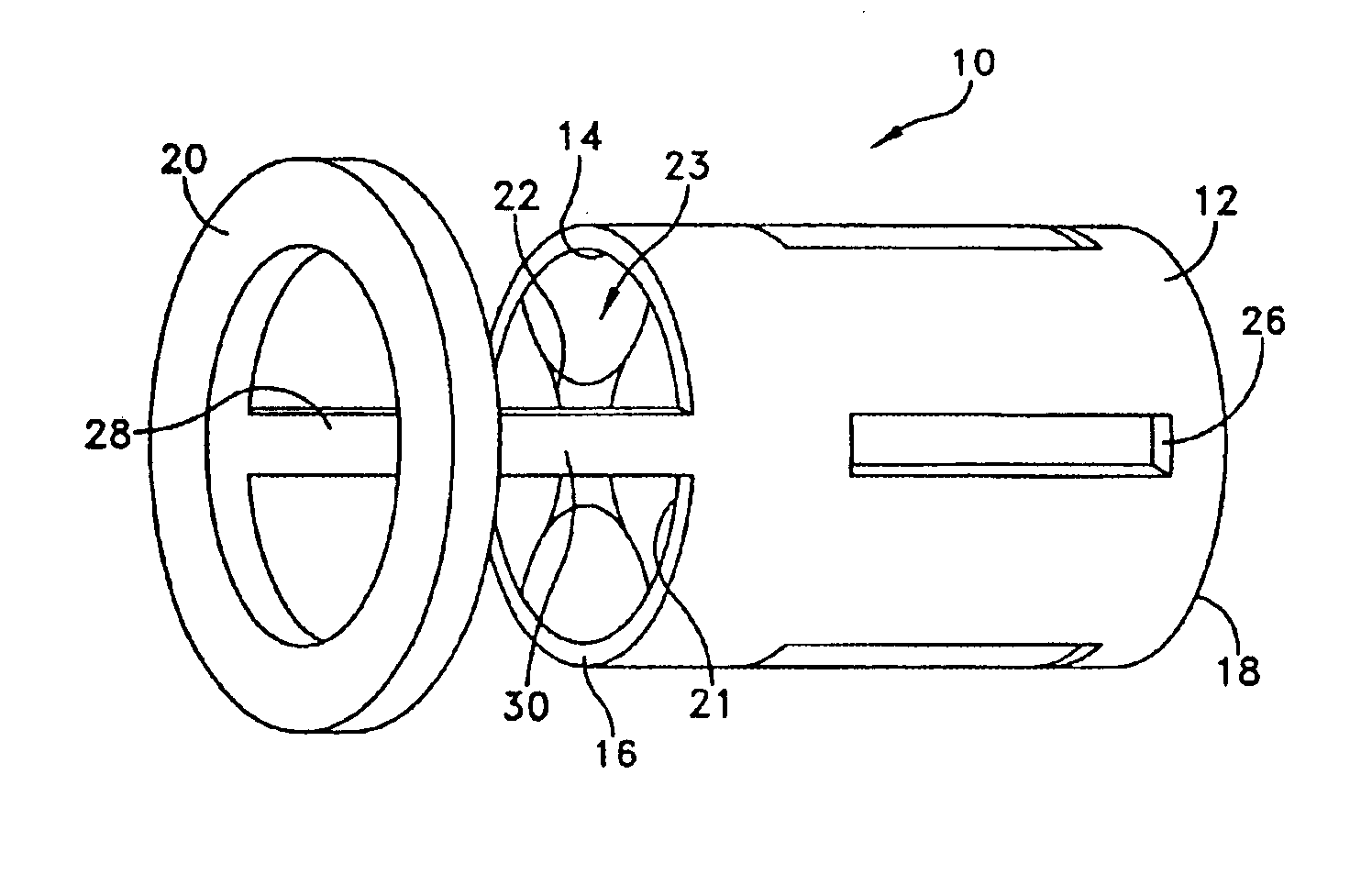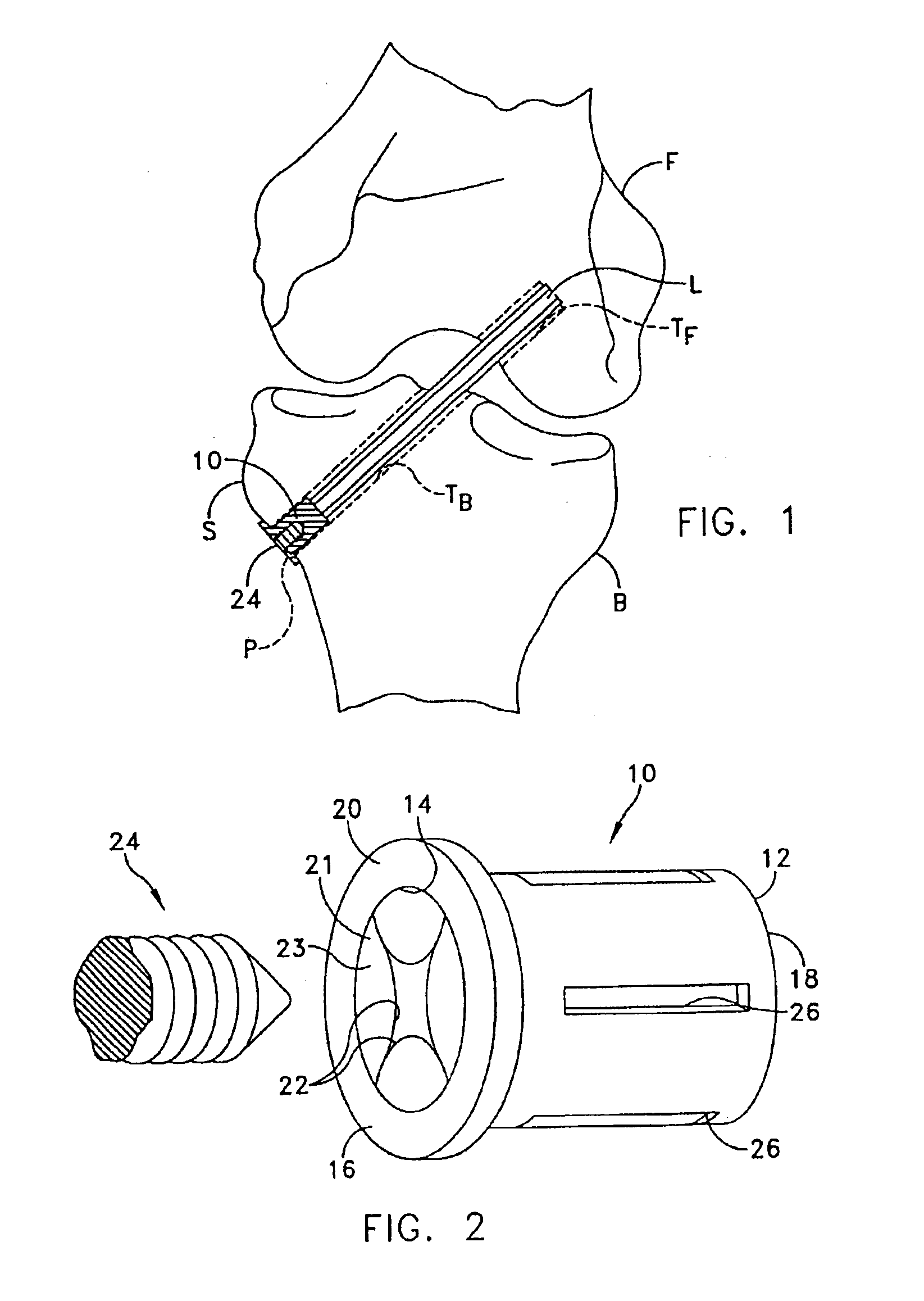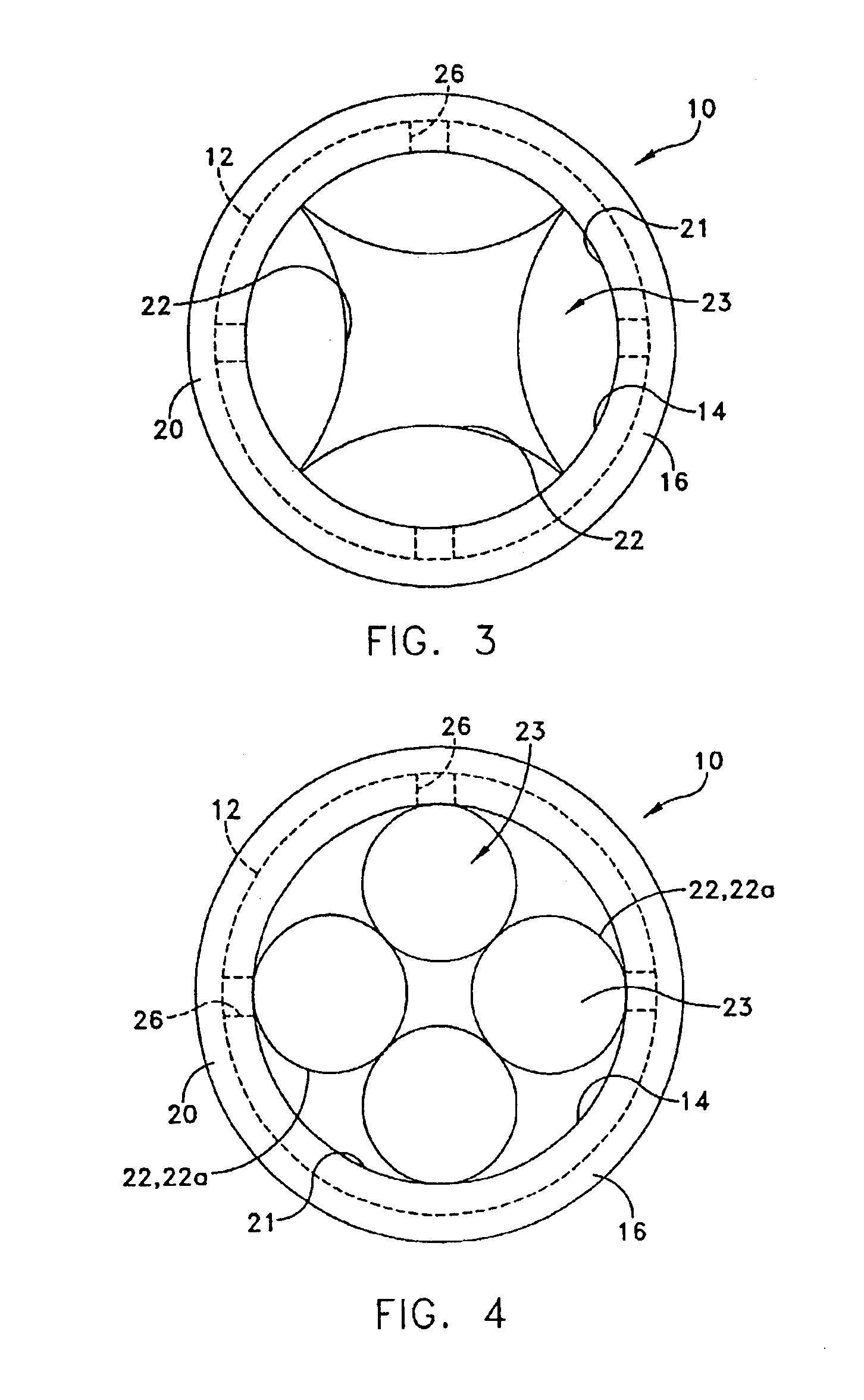Graft ligament anchor and method for attaching a graft ligament to a bone
a graft ligament and bone technology, applied in the field of medical equipment and methods, can solve the problems of difficult to easily and reliably anchor the graft ligament to the bone, the quality of the bone receiving the graft ligament may be poor, and the torn ligaments or ruptures, etc., to achieve the effect of convenient handling and installation, low manufacturing cost and simple construction
- Summary
- Abstract
- Description
- Claims
- Application Information
AI Technical Summary
Benefits of technology
Problems solved by technology
Method used
Image
Examples
Embodiment Construction
[0041]Referring first to FIG. 1, it will be seen that in one application of the graft ligament anchor, bone tunnels TF and TB are formed in a femur F and tibia B, respectively. A graft ligament L is anchored at one end (not shown) in the femur F by means well known in the art, and extends from femoral tunnel TF and into tibial tunnel TB and therethrough. The free end of graft ligament L extending from a tunnel opening P on a tibial surface S must be anchored to tibia B, so that graft ligament L is secured at both ends and essentially duplicates the function of the aforementioned ACL.
[0042]Referring next to FIGS. 1-3, it will be seen that, in one illustrative embodiment, the inventive graft ligament anchor 10 includes a tubular body 12 having a bore 14 extending therethrough and having a proximal end 16 and a distal end 18. An annular flange 20 is fixed to tubular body 12 at proximal end 16 thereof, and extends radially outwardly beyond body 12. Flange 20 may be continuous, interrupt...
PUM
 Login to View More
Login to View More Abstract
Description
Claims
Application Information
 Login to View More
Login to View More - R&D
- Intellectual Property
- Life Sciences
- Materials
- Tech Scout
- Unparalleled Data Quality
- Higher Quality Content
- 60% Fewer Hallucinations
Browse by: Latest US Patents, China's latest patents, Technical Efficacy Thesaurus, Application Domain, Technology Topic, Popular Technical Reports.
© 2025 PatSnap. All rights reserved.Legal|Privacy policy|Modern Slavery Act Transparency Statement|Sitemap|About US| Contact US: help@patsnap.com



